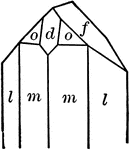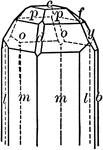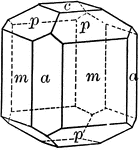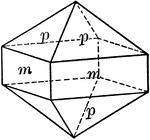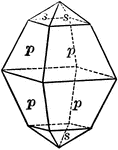
Sulphur
"Resinous luster. Color sulphur-yellow, varying with impurities to yellow shades of green, gray, and…

Sulphur
"Resinous luster. Color sulphur-yellow, varying with impurities to yellow shades of green, gray, and…
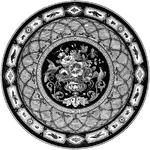
Table-Top
This table-top is made from the marble of Derbyshire, England. It also is made out of lapis lazuli a…

Titanite
"Monoclinic. Crystals varied in habit. Often with prominent basal plane which is steeply inclined and…
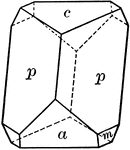
Titanite
"Monoclinic. Crystals varied in habit. Often with prominent basal plane which is steeply inclined and…

Topaz
"Orthohombic. In prismatic crystals terminated by pyramids, domes, and basal plane." — Ford, 1912

Tourmaline
"Tourmaline crystals show the forms of the Rhombohedral Class but with hemispherical development. They…
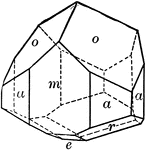
Tourmaline
"Tourmaline crystals show the forms of the Rhombohedral Class but with hemispherical development. They…

Tourmaline
"Tourmaline crystals show the forms of the Rhombohedral Class but with hemispherical development. They…
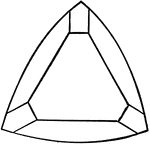
Tourmaline
"Hexagonal-rhombohedral; hemimorphic. Crystals usually prismatic, vertically striated. A triangular…
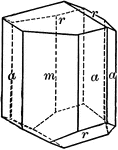
Tourmaline
"Hexagonal-rhombohedral; hemimorphic. Crystals usually prismatic, vertically striated. A triangular…

Vesuvianite
"Tetragonal. Prismatic in habit. Often vertically striated. Common forms are prisms of first and second…
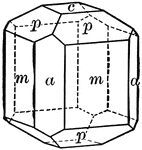
Vesuvianite
"Tetragonal. Prismatic in habit. Often vertically striated. Common forms are prisms of first and second…

Vesuvianite
This form shows a very complex combination of thirteen tetragonal forms occuring on the mineral Vesuvianite:…
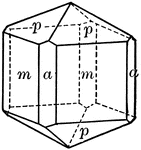
Wernerite
"Tetragonal; tripyramidal. Crystals usually prismatic. Prominent forms are prisms of the first and second…

Wernerite
"Tetragonal; tripyramidal. Crystals usually prismatic. Prominent forms are prisms of the first and second…

Zircon
"Tetragonal. Crystals usually show a simple combination of prism and pyramid of the first order. The…

Zircon (Twinning)
In the tetragonal system, the unit pyramid of the second order is the most common twinning plane. This…
